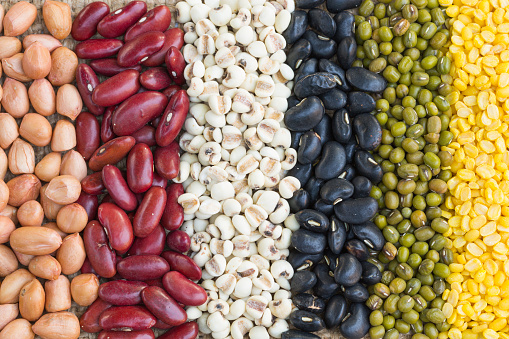Apr. 06, 2023
Agriculture
A bean seed is a vital part of the bean plant. It is responsible for the growth and development of the plant. The bean seed is formed from the fertilization of the ovule by the male gamete. Bean seeds come in different shapes, sizes, and colors depending on the type of bean. In this essay, we will explore the different components of a bean seed and their significance.

The bean seed is composed of three main parts: the seed coat, the cotyledon, and the embryo. The seed coat is the outer layer that protects the inner components of the seed. It is composed of a hard, protective layer called the testa, which protects the embryo from damage, desiccation, and predation. The testa can be of different colors depending on the type of bean. For instance, the testa of black beans is black, while that of kidney beans is red.
The cotyledon is the nutrient storage organ of the seed. It is a fleshy structure that stores nutrients, such as carbohydrates, proteins, and lipids, which are essential for the growth and development of the embryo. The cotyledon is the part of the bean seed that is eaten by humans and animals. It can be consumed fresh or dried and is a rich source of nutrients.
The embryo is the developing plant inside the seed. It consists of the embryonic root (radicle), embryonic shoot (plumule), and embryonic leaves (hypocotyl). The radicle is the first part of the embryo to emerge from the seed coat during germination. It develops into the primary root of the bean plant, which anchors the plant in the soil and absorbs water and nutrients. The plumule develops into the stem and leaves of the plant. The hypocotyl is the region between the cotyledons and the radicle. It elongates during germination, pushing the cotyledons above the soil surface.
Featured content:Germination is the process by which a seed develops into a plant. In the case of bean seeds, germination occurs when the seed absorbs water and the embryo begins to grow. The first stage of germination is the absorption of water by the seed coat, which causes it to swell and crack. The radicle emerges from the seed coat and grows downward, anchoring the plant in the soil. The hypocotyl elongates, pushing the cotyledons above the soil surface. The plumule then emerges from between the cotyledons, developing into the stem and leaves of the plant.
Bean seeds are a vital source of nutrients for humans and animals. They are a rich source of protein, carbohydrates, and other essential nutrients, making them an important part of a healthy diet. In addition, bean seeds are used in the production of various food products, such as soups, stews, and baked goods.
Bean seeds are also significant in agriculture. They are a common crop in many parts of the world and can be grown in a wide range of climates and soil types. Bean plants are also used in crop rotation, which helps to improve soil fertility and reduce pest and disease problems.
In conclusion, bean seeds are an important part of the bean plant. They are composed of the seed coat, cotyledon, and embryo, and play a vital role in the growth and development of the plant. Bean seeds are also significant in human and animal nutrition, as well as in agriculture. Understanding the anatomy and germination of bean seeds is essential for the successful cultivation of bean crops and the production of high-quality food products.
Featured content:Related Articles
If you are interested in sending in a Guest Blogger Submission,welcome to write for us!
All Comments ( 0 )